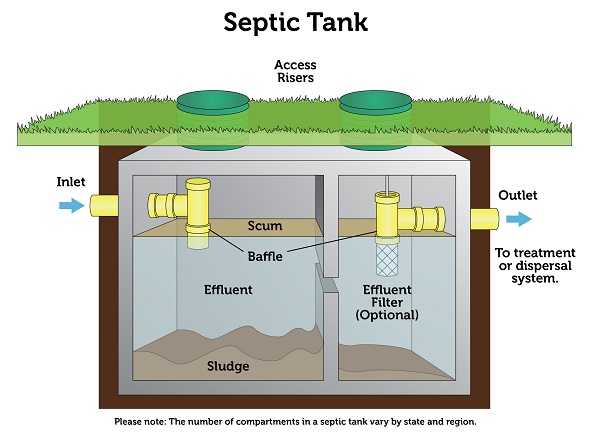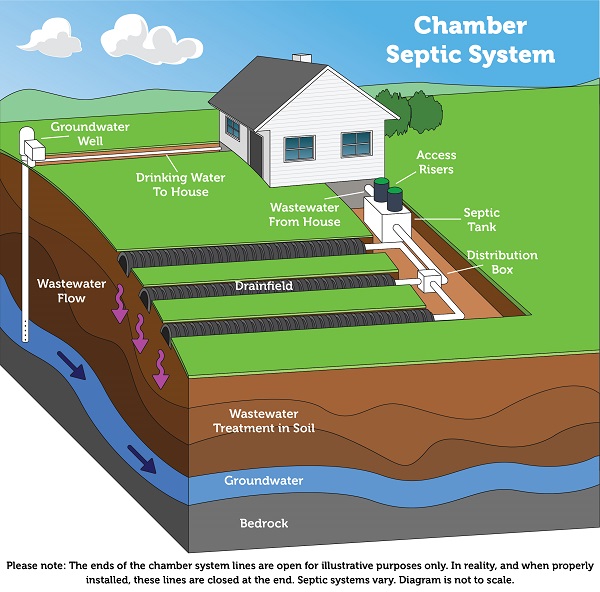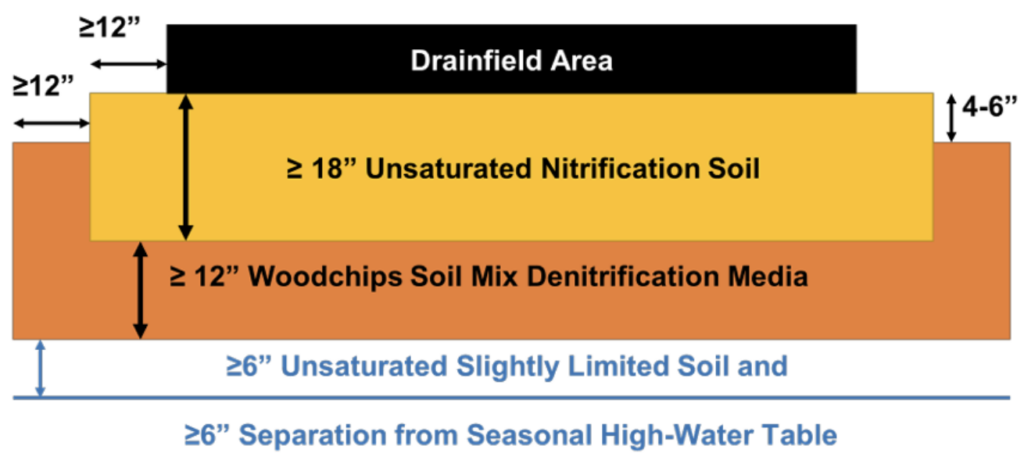From permitting to site evaluation and permitting all the way to installation and inspection, we will handle your need for a new septic system with efficiency and attention. Homeowners, builders, and property owners routinely turn to us because of our reliability.
Septic Systems in Florida need to be permitted before installation can begin. From start to finish, we can handle your septic system needs. We have been permitting septic systems for over 20 years and are confident that you will be satisfied with the results. The process is typically like this:
Soil Evaluations are performed in the proposed area of the septic system. Soil profiles are completed on site and oftentimes the results are immediate. Our septic soil evaluations are completed on state approved forms that can be submitted towards a permit.
A site evaluation is also required in Florida to obtain a permit to construct or repair a septic system. The site evaluation can be done at the same time as the soil test to more accurately determine the expected specifications of the septic tank and/or drainfield.
Our site evaluations are highly accurate and include setbacks, soils, water bodies, proposed and existing structures.
We handle all septic permitting needs from the smallest residential to the largest commercial systems.
A septic permit is issued by either the Florida Department of Environmental Protection or by the local county health department depending on the property location.
To obtain a septic permit an application package must be submitted for review. The permit application package consists of an application, flow calculations, property deed and/or survey, plat information, scaled site plan, proposed and existing floor plans, site evaluation, soil profiles, setbacks, system design, and system evaluation if an existing septic is on site. We take care of all of this and hand you a permit.
The four main types of permits are:
Variance: Permits for some properties and projects may have outstanding challenges. For difficult situations, a request for variance may be required. We handle all of this for you to deal with the challenging situation and obtain a permit.
A site plan is needed as part of the septic permit application package. The site plan must be to scale and show all required and existing and proposed features. We can handle this for your project as part of the septic system permit application.
For other needs outside of septic system permits, we have many options for site plans from informal sketches to our most accurate site plans which are created by bringing in highly accurate GPS field data and using engineering and GIS software to produce easily understood and usable site plans for land use planning or permitting. Our scaled site plans have been used by many counties and state level agencies.
Our site plans are great for septic system applications and other needs. Our products include detailed aerial maps, diagrams, and CAD drawings and have been accepted in over 35 counties in Florida.
Most of the time your septic system can be designed based on the projected flow of the proposed or existing structure, assessment of the features on site, and application of state rules and regulations. We design systems for new septic systems, repairs, modifications, and Aerobic Treatment Units.
Performance Based Treatment Systems, low pressure dosed systems, and some other systems are required to have an engineer design the system. Our engineer has been designing septic and wastewater systems for over 30 years in numerous states and countries and is considered to be one of the leading septic system designers in the state.
We are able to get you the best and cheapest legal systems in the State of Florida.
We design the systems ourselves to meet or exceed state requirements. If necessary, if we can’t get the system installed, we can bid your job out for the lowest bids possible. Septic systems are then installed by only the best state-licensed and insured installers under our supervision.
After installation, we then inspect the system ensuring that installation meets or exceeds the design criteria and you are getting your money’s worth.
We are state certified to be able to inspect all septic systems in the state of Florida. We are competitively priced and can have your construction and/or final inspection into the state usually on the same day.
We are one of the leading inspectors for septic systems in North Florida.
If your system is backed up, slow, or damaged we will work to get it fixed in the most affordable way possible. We will determine the cause of failure when possible, design the cheapest most effective system or fix that meets state regulations. Then the system is installed by the best registered septic contractors available. Your job is important to us and your money is important to you. That’s why we make sure that you are getting the most affordable legal system that will work for years to come. We handle all permitting, site evaluations, soil testing, inspection and system installation needs.
Septic systems in the past would typically consist of a concrete tank and an aggregate drainfield with perforated sewer pipe in it to distribute the effluent. Nowadays there are many options depending on needs, requirements, site-specific demands, and budget.
Here is an animation of how a septic system works:
A septic tank is a buried, watertight tank designated and constructed to receive and partially treat raw domestic sanitary wastewater. Heavy solids settle to the bottom of the tank while greases and lighter solids float to the top. The solids stay in the tank while the wastewater is discharged to the drainfield for further treatment and dispersal.


Gravelless drainfields have been widely used for over 30 years in many states and have become a conventional technology replacing gravel systems. They take many forms, including open-bottom chambers, fabric-wrapped pipe, and synthetic materials such as expanded polystyrene media. The gravelless systems can be manufactured with recycled materials and offer a significant savings in carbon footprint.
An example of a gravelless system is the chamber system. The chamber system serves as an alternative design to the gravel/stone system. The primary advantage of the chamber system is increased ease of delivery and construction. They are also well suited to areas with high groundwater tables, where the volume of influent to the septic system is variable (e.g., at a vacation home or seasonal inn), in an area where gravel is scarce, or in areas where other technologies such as plastic chambers are readily available.
This type of system consists of a series of connected chambers. The area around and above the chambers is filled with soil. Pipes carry wastewater from the septic tank to the chambers. Inside the chambers, the wastewater comes into contact with the soil. Microbes on or near the soil treat the effluent.


Aerobic Treatment Units (ATUs) use many of the same processes as a municipal sewage plant, but on a smaller scale. An aerobic system injects oxygen into the treatment tank. The additional oxygen increases natural bacterial activity within the system that then provides additional treatment for nutrients in the effluent. Some aerobic systems may also have a pretreatment tank and a final treatment tank including disinfection to further reduce pathogen levels.
The benefits of this system are that it can be used in homes with smaller lots, inadequate soil conditions, in areas where the water table is too high, or for homes close to a surface water body sensitive to contamination by nutrients contained in wastewater effluent. Regular life-time maintenance should be expected for ATUs.
INRBs, or Wood chip systems as they are often referred to, are nitrogen reducing systems that meet the state requirements for springs zones in certain situations. They are an attractive option for nitrogen reducing as they contain no moving parts, require no electricity, do not require an annual operating permit or yearly inspections, and are more affordable than other options meeting the nitrogen reducing criteria.
Cross-sectional view of INRB:

PBTS systems are specially engineered to meet specific effluent nutrient goals.

Low Pressure Dosed Systems are typically needed for very large commercial systems. They are required to be engineer designed. We have designed and inspected installation of many LPDS in North Florida.
Drip Irrigation Systems are another method for onsite wastewater treatment that involves aerobic treatment of sewage to reduce nitrogen, reduction of solids, and then dispersal through a network of small diameter hose throughout the absorption area. Drip systems are required to be engineer designed and we can handle your drip irrigation needs.